|
Posted: 9/9/2022 2:11:23 PM EDT
Anybody have any experience with these?
My understanding is BA has a 1 MOA guarantee. I recently finished a built with one in 14.5" pinned welded for my YHM supp. Topped with a Primary 1-6x shooting from support (I'm doing my part) I was shooting about a 3" group at 100. Ammo was Hornady 77(I think) SBR training ammo. Good stuff ime. I realize that 6x is not alot and might be difficult to have consistent POA. Is it just a mediocre barrel or is something else going on? I do like the fact that it's a light weight barrel, but if it's shooting 3MOA it's not worth it. Ultimately I want a light weight, compact, accurate gun. I guess you could call it a "recce rifle" even though I hate that term. |
|
|
|
|
[Last Edit: Switchback_Arms]
[#1]
|
|
|
|
|
[#2]
I don't think you can judge that barrel on its first batch of ammo..
They have a pretty good reputation I thought. Try some different loads and go from there. It's still a coin toss wether it's capable of better. |
|
|
|
|
[#3]
That's not precision ammo.
You need to try numerous "match grade" loads, and while BA will say they have an MOA guarantee, it's basically a lie. They're not very good barrels. |
|
|
|
|
[#4]
Originally Posted By cheekibreeki: That's not precision ammo. You need to try numerous "match grade" loads, and while BA will say they have an MOA guarantee, it's basically a lie. They're not very good barrels. View Quote That's what I figured. Although ammo isn't match grade, I've had good success with it. |
|
|
|
|
[Last Edit: cheekibreeki]
[#5]
Fortunately there's plenty out there now, but it's just as pricey as the SBR stuff. I'd recommend trying stuff like Federal GMM, the Hornady Match designated stuff, and many of the 77gr or 69gr SMK loads.
You'll likely find more than one which will do well under 1" at 100 yards, it's just easier with better barrels. The 6x scope is ample to do small groups at 100 yards if your fundamentals are good. Precision shooting an AR is a different animal than a bolt gun. |
|
|
|
|
[#6]
I was shooting Hornady 75gr BTHP SBR Training
|
|
|
|
|
[#7]
Unfortunately you can't pick an ammo and force your rifle to like it. Buy a few different boxes of match ammo and shoot them for groups. Your barrel will tell you what it likes. It may prefer 69g over 77 or brand y over x. You just have to put in the time and find out. Don't write it off yet. It could shoot lights out when you give it what it wants.
|
|
|
|
|
[#8]
I definitely get that. I learned shooting FGMM out of my PTR to find I get better groups with steel cased! I assume it's twist rate related.
My goal with this rifle was have a rifle generally accurate and able to shoot <2" groups with 55gr since that's the most plentiful ammo. I'll try a few other rounds and keep an eye out for other barrels. |
|
|
|
|
[Last Edit: Molon]
[#10]
Originally Posted By Pav56C: My goal with this rifle was have a rifle generally accurate and able to shoot <2" groups with 55gr since that's the most plentiful ammo. View Quote There isn't a semi-automatic AR-15 on the planet that will consistently shoot <2" using domestically manufactured 55 grain FMJ M193 clones. Return Of The M193 Clones 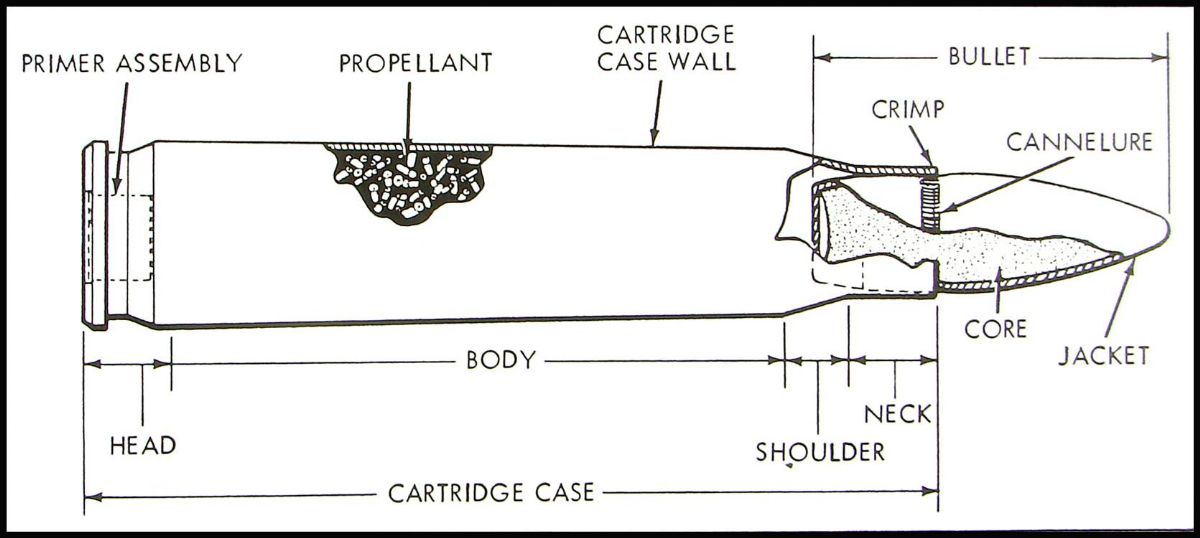 clone: one that appears to be a copy of an original form Part 1 Genuine US Military M193 can no longer be sold to civilians, thanks to the Clinton Administration. The ammunition that is sold on the commercial market with some form of “M193” in its nomenclature is often referred to as an “M193 clone” because it “appears to be a copy” of genuine M193, but we generally have no idea what specifications of MIL-C-9963 that this ammunition has passed, or has even been tested for. Genuine M193 must be tested for and pass all of the specifications laid out in the mil-spec, MIL-C-9963. The required areas of testing included in MIL-C-9963 range from velocity, accuracy, chamber pressure and port pressure to waterproofing, temperature stability, bullet extraction, case hardness, fouling and much more. M193 is loaded with a 55 grain FMJ bullet with a cannelure. The bullet itself, must meet required specifications in order to be used in genuine M193 ammunition. For example, the specification for the thickness of the gilding metal jacket of the bullet is 0.021" with a tolerance of - 0.002". For comparison, the jacket of Hornady’s 55 grain FMJ bullet has a thickness of approximately 0.028”. Jacket thickness can have a significant effect on terminal ballistic properties, particularly that of fragmentation. Even the composition of the copper alloy used for the jacket and the lead used for the slug must meet mil-spec requirements for genuine M193. Genuine M193 can only be charged with powder that has been specifically approved by the US Military for use in this cartridge. If the ammunition in question is not loaded with one of the approved powders, it is not genuine M193 and naturally we have no way of determining what powder was used in a load simply by visual inspection. Genuine M193 will have the annealing iris visible on the shoulder and neck portion of the case. It will also will have crimped and sealed primers. Genuine M193 has a crimped case mouth along with sealant at the case mouth. In 2010, I posted an in-depth evaluation of four different brands of M193 clones that were readily available at that time. (Attack of the (M193) Clones) For this article, I evaluated recent production lots of the same four brands of M193 clones (though not necessarily the same manufacturers.) Winchester M193 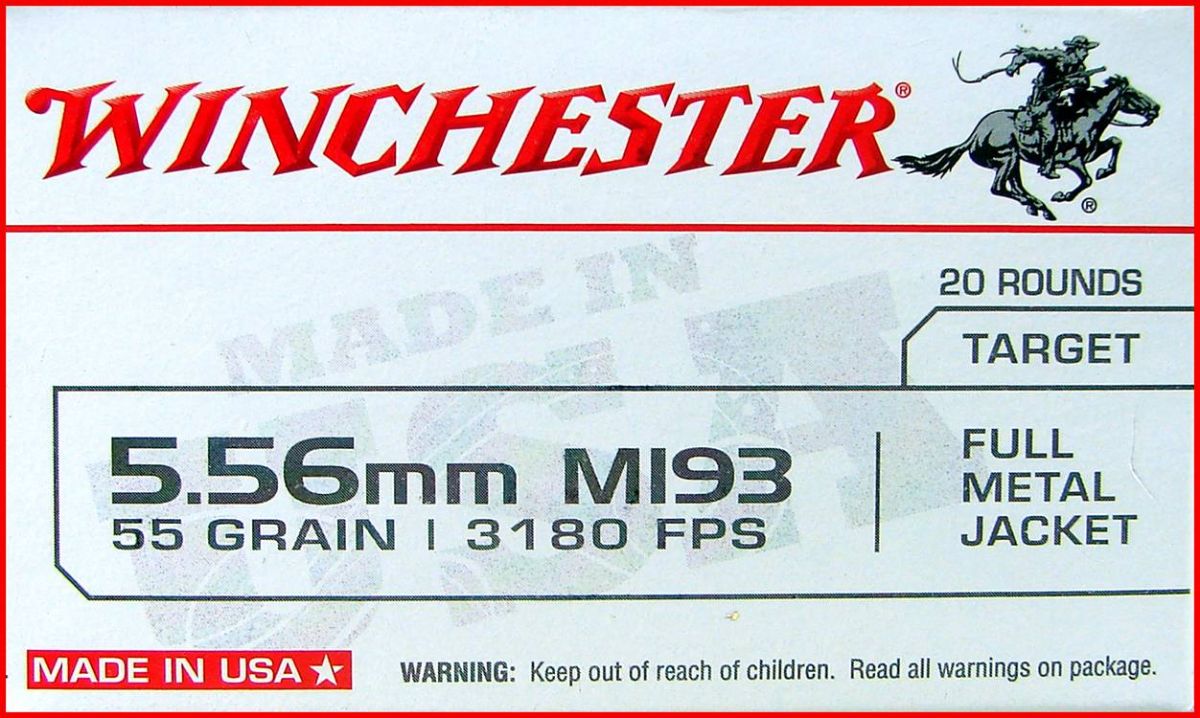 This lot of Winchester M193 is loaded in Lake City brass with a 2021 headstamp. The case-head stamp exhibits the octal station identifiers found on Lake City SCAMP machinery. The brass cases have the annealing iris still visible. The rounds are charged with ball powder. The primer pockets are crimped, but do not have any sealant. The case mouths are also crimped, but also have no sealant. 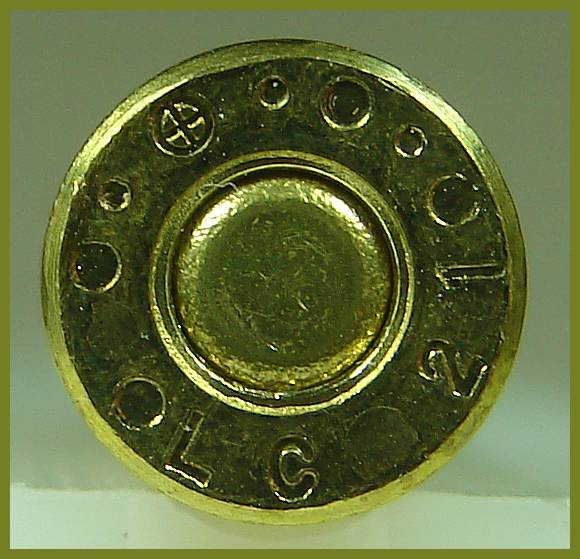 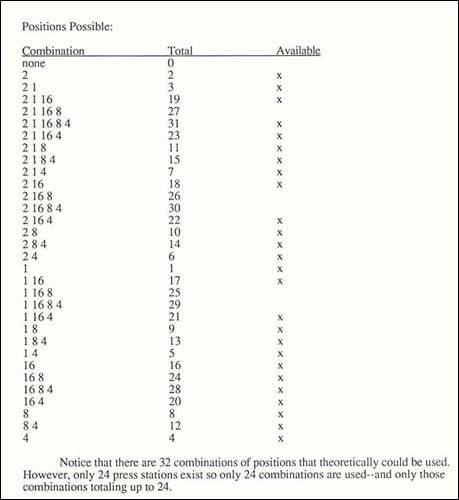 The lot number for this lot of Winchester M193 is pictured below. The “WLC21” in the prefix of the lot number indicates that this lot of Winchester M193 was manufactured at Lake City in 2021 under Winchester “management.”  Federal XM193 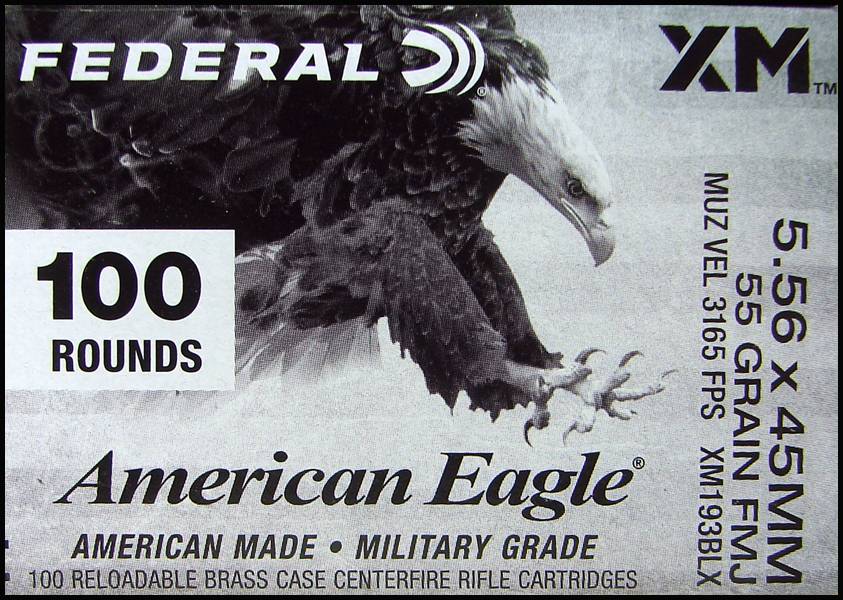 This lot of Federal XM193 is loaded in Lake City brass with a 2021 headstamp. The case-head stamp exhibits the octal station identifiers found on Lake City SCAMP machinery. The brass cases have the annealing iris still visible. The rounds are charged with ball powder. As with the Winchester M193, the primer pockets of this lot of Federal XM193 are crimped, but do not have any sealant. The case mouths of this lot of Federal XM193 are also crimped, but also have no sealant. 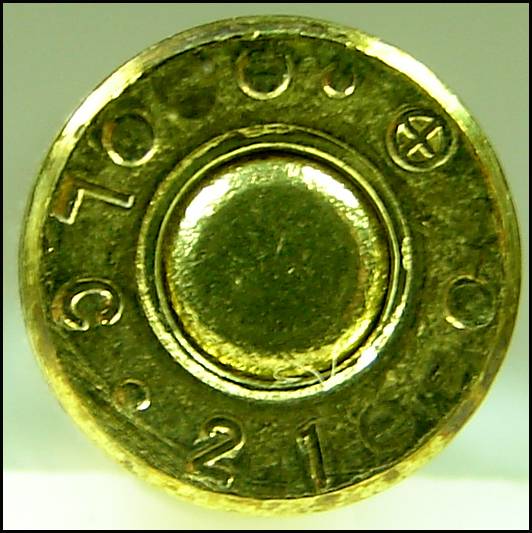 The lot number for this lot of Federal XM193 is pictured below. The “WLC21” in the prefix of the lot number indicates that this lot of Federal XM193 was manufactured at Lake City in 2021 under Winchester “management.”  IMI M193 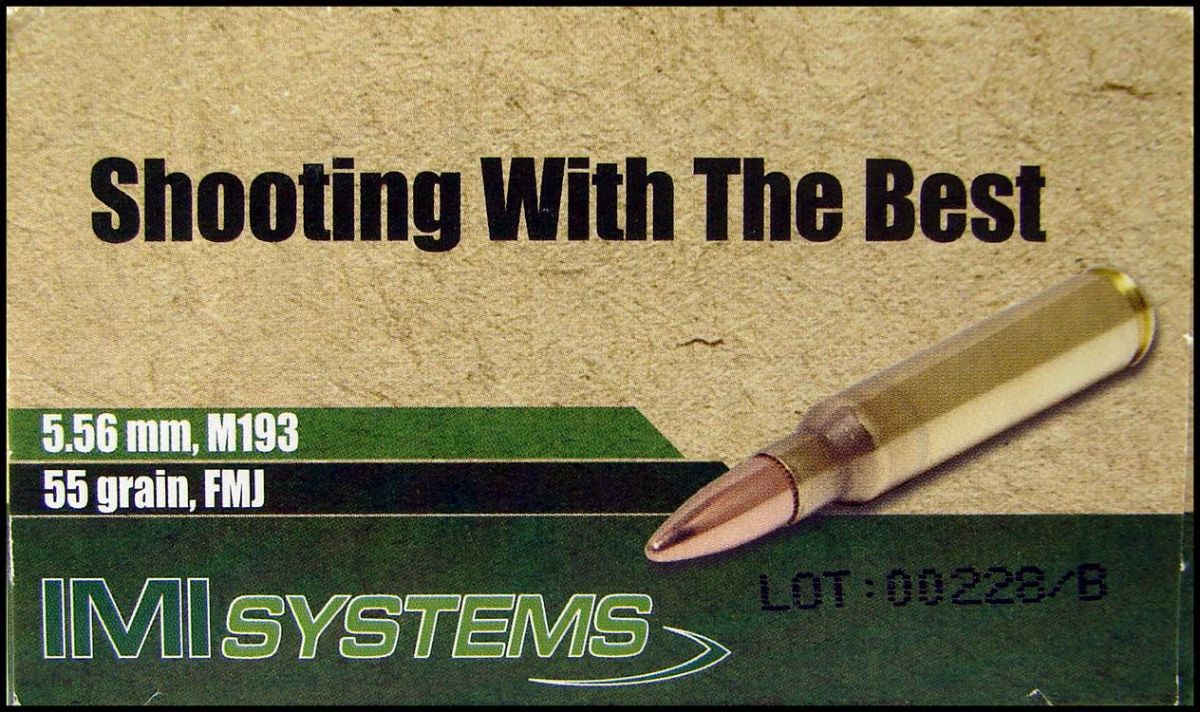 This lot of IMI M193 is loaded in IMI brass with a 2021 headstamp. The annealing iris is visible and the rounds are charged with ball powder. The primer pockets are crimped and sealed and the case mouths are also crimped and sealed. 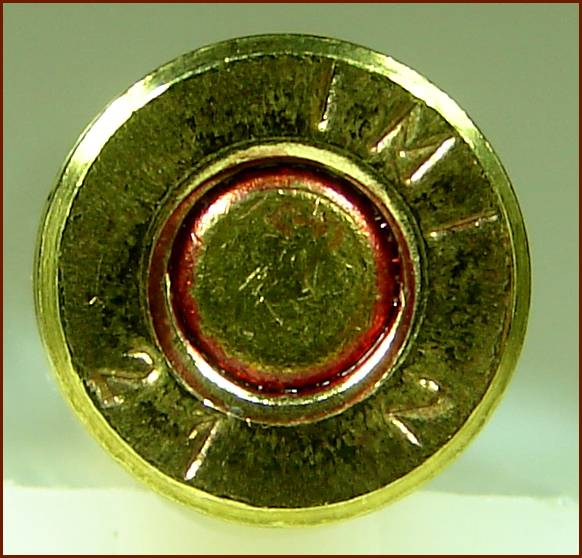 Prvi Partizan (PPU) M193 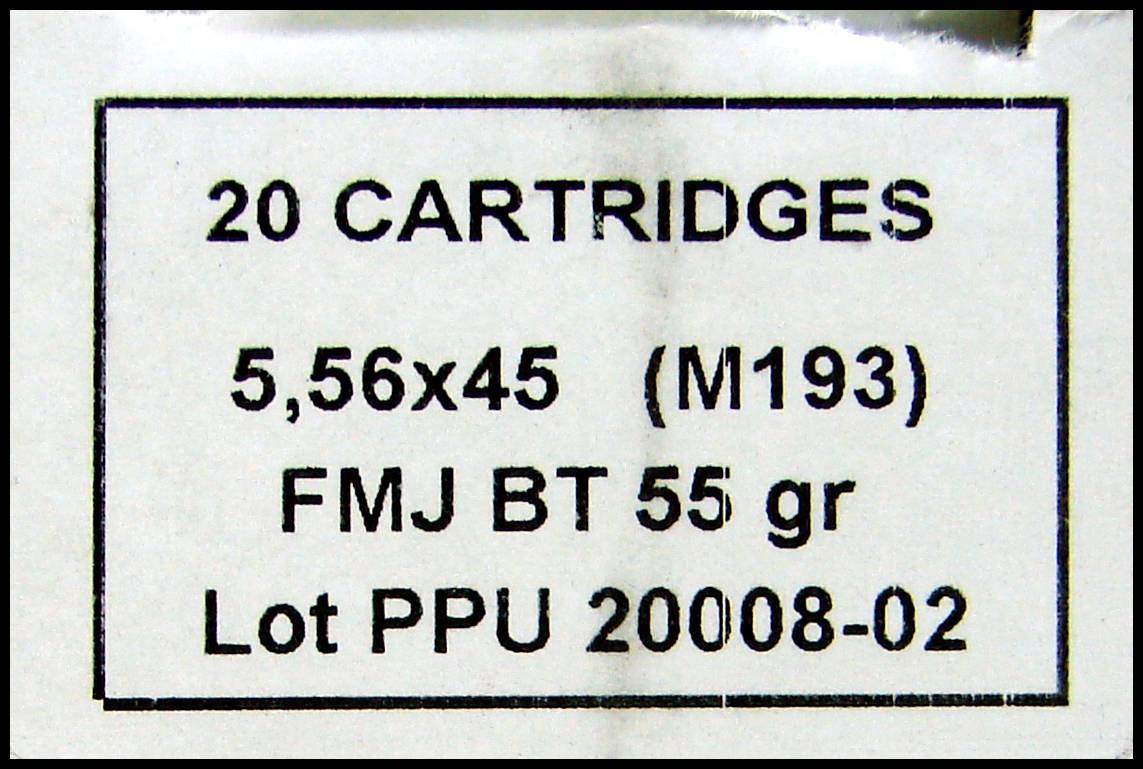 The PPU M193 brass has a 2020 headstamp and the annealing iris is visible. The primer pockets are crimped and sealed, as are the case mouths and the ammunition is charged with ball powder. 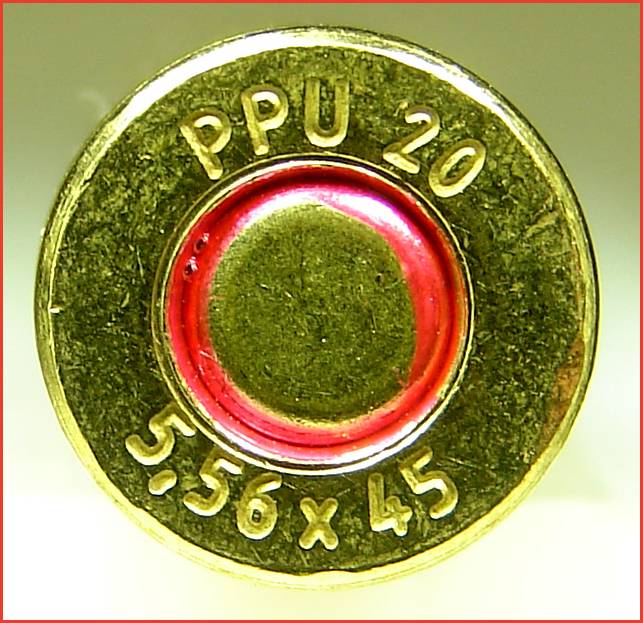 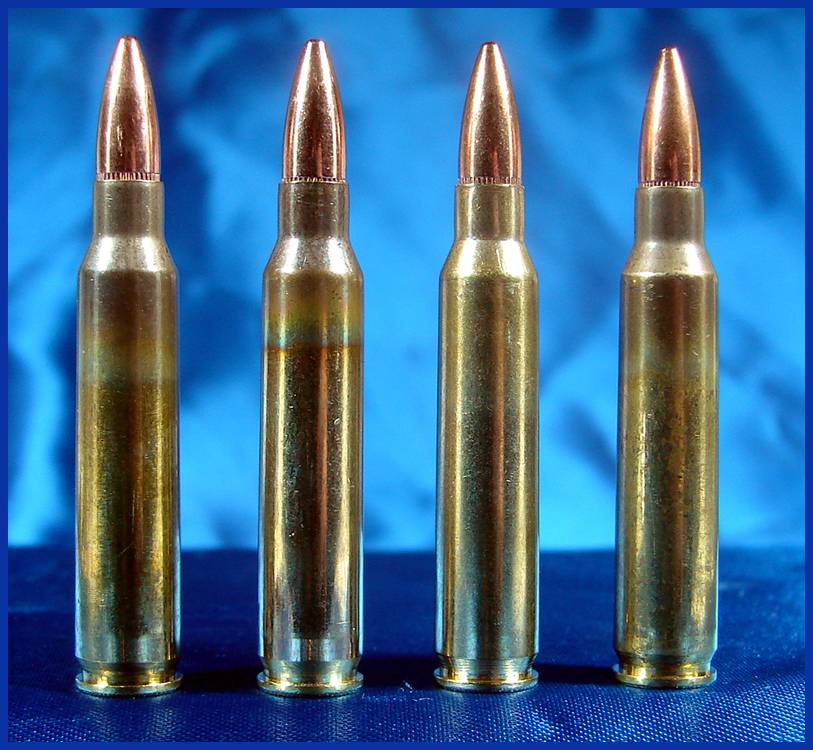 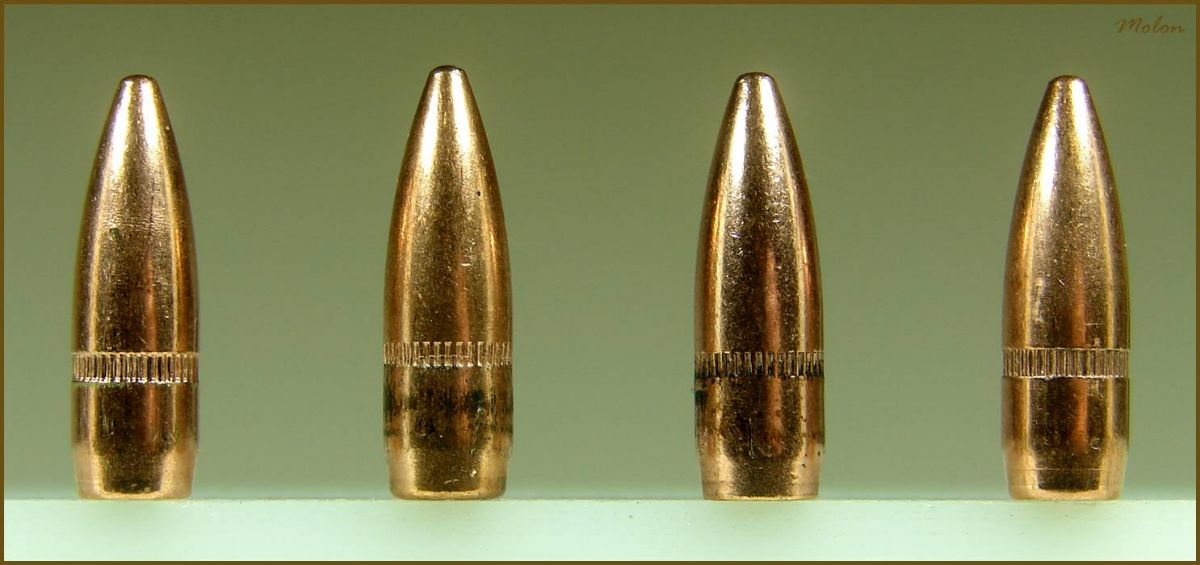 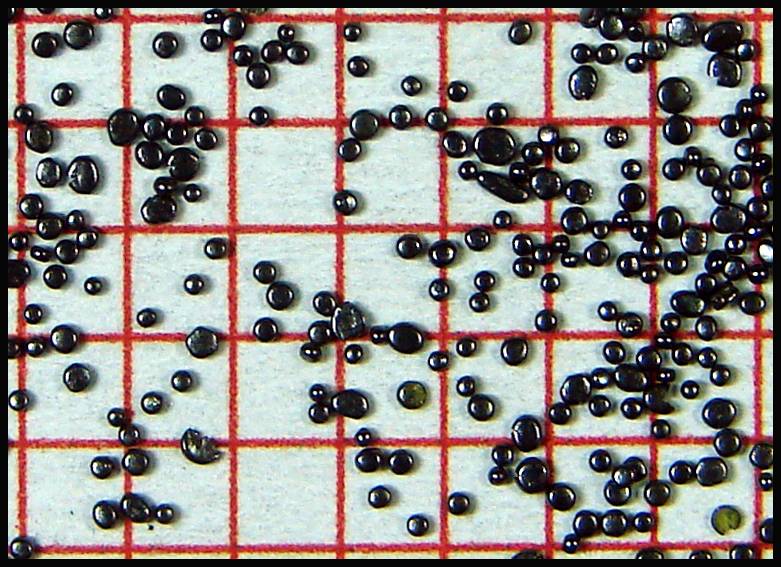 Part 2 Aside from aspects of M193 clones that can be assessed by visual inspection, the two main aspects of M193 clones that we can assess via live fire testing to determine if an M193 clone adheres to the US mil-spec are velocity and accuracy (technically precision). The velocity specification for M193 as cited in MIL-C-9963F states: "The average velocity of the sample cartridges, conditioned at 72 degrees, plus or minus 2 degrees Fahrenheit (F), shall be 3165 feet per second (ft/sec), plus or minus 40 ft/sec, at 78 feet from the muzzle of the weapon. The standard deviation of the velocities shall not exceed 40 ft/sec." The velocity specification is for a 20” test barrel. Depending on multiple variables, this velocity specification equates to a muzzle velocity of approximately 3270 ft/sec, plus or minus 40 ft/sec. As an aside, after reading the above specification, some of you may be wondering, “Why 78 feet from the muzzle?” The answer to that question is that this specification is simply an historical hold-over from the days when “circuit” chronographs (e.g. Le Boulenge Chronograph and the Aberdeen Chronograph) were used at Aberdeen Proving Ground, Frankford Arsenal and Springfield Armory. These types of chronographs required a significant distance between their first and second screens to produce accurate results. As an example, when using the Boulenge Chronograph, the first screen of the chronograph was placed 3 feet in front of the muzzle and the second screen was placed 150 feet beyond the first screen. For those of you who might not be aware of the following fact; chronographs determine the velocity of the bullet at a point that is midway between the first and the second screen (i.e. not at the location of the first screen). Therefore, with the above spacing, the velocity of the bullet is determined for a point that is 75 feet from the first screen. So, add the three feet (from the muzzle to the first screen) to the 75 feet (the midway point of the screens) to obtain the “78 feet from the muzzle” distance.  I chronographed the four M193 clones evaluated for this article from a semi-automatic AR-15 with a chrome-lined, NATO chambered 20” Colt barrel with a 1:7” twist. Chronographing was conducted using an Oehler 35-P chronograph with “proof screen” technology. The Oehler 35P chronograph is actually two chronographs in one package that takes two separate chronograph readings for each shot and then has its onboard computer analyze the data to determine if there is any statistically significant difference between the two readings. If there is, the chronograph “flags” the shot to let you know that the data is invalid. There was no invalid data flagged during this testing. The velocities listed in the table below are muzzle velocities as calculated from the instrumental velocities using Oehler’s Ballistic Explorer software program. Each string of fire consisted of 10 rounds over the chronograph. 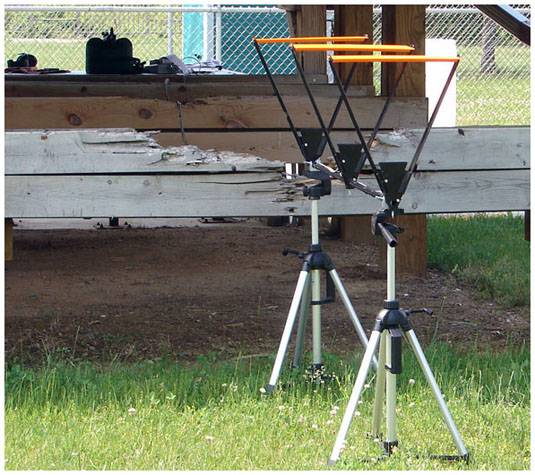  Each round was single-loaded and cycled into the chamber from a magazine fitted with a single-load follower. The bolt locked-back after each shot allowing the chamber to cool in between each shot. This technique was used to mitigate the possible influence of “chamber-soak” on velocity data. Each new shot was fired in a consistent manner after hitting the bolt release. Atmospheric conditions were monitored and recorded using a Kestrel 4000 Pocket Weather Tracker.  Atmospheric conditions Temperature: 72 degrees F Humidity: 78% Barometric pressure: 30.02 inches of Hg Elevation: 950 feet above sea level The muzzle velocities of the four M193 clones are listed in the table below, along with the standard deviations and coefficients of variation. 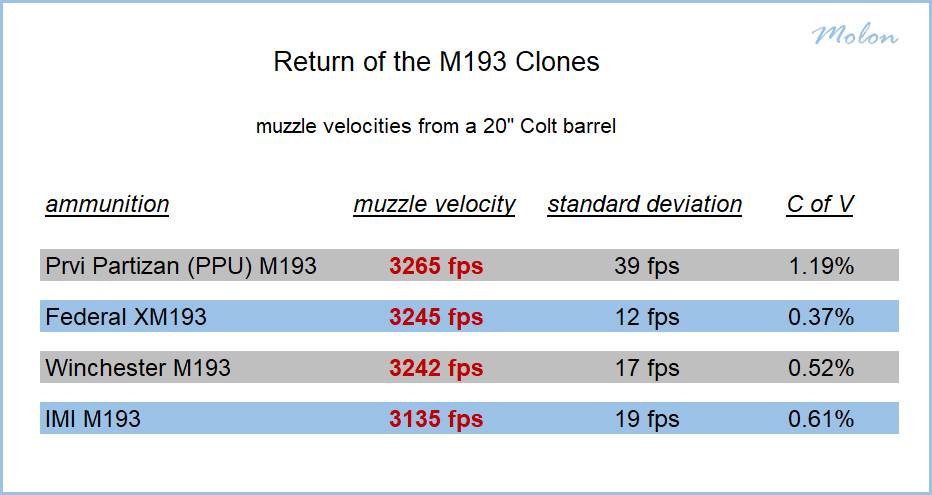 For those of you who might not be familiar with the coefficient of variation (CV), it is the standard deviation, divided by the mean (average) muzzle velocity and then multiplied by 100 and expressed as a percentage. It allows for the comparison of the uniformity of velocity between loads in different velocity spectrums; e.g. 77 grain loads running around 2,650 fps compared to 55 grain loads running around 3,250 fps. The mil-spec for M193 allows for a coefficient of variation of approximately 1.2%, while one of my best 77 grain OTM hand-loads, with a muzzle velocity of 2639 PFS and a standard deviation of 4 FPS, has a coefficient of variation of 0.15%.  For comparison to the velocities of the M193 clones evaluated for this article, the next table shows the muzzle velocities of the four M193 clones that I evaluated in 2010 (also fired from a 20” Colt barrel.) 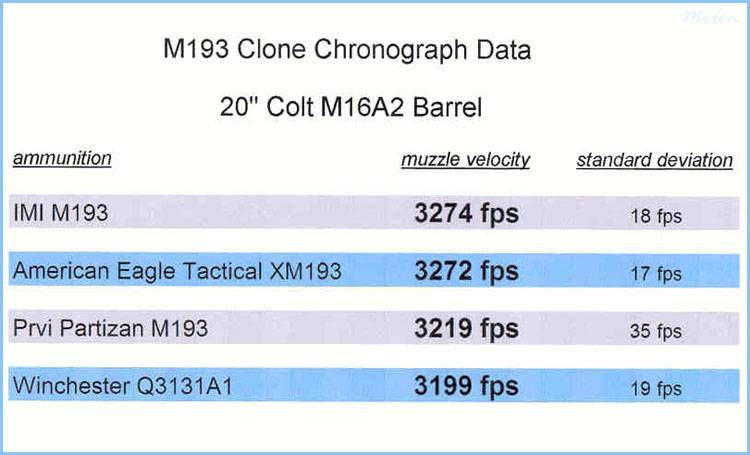 Part 3 The US accuracy specification for M193 cited in MIL-C-9963F is as follows: “The average of the mean radii of all targets of the sample cartridges, fired at 200 yards, shall not exceed 2.0 inches.” These averages are from 10-shot groups fired from machine rested, bolt-actioned, heavy test barrels. All things being equal this specification equates to a mean radius of 1 inch at 100 yards (the distance at which I tested this ammunition). I conducted an accuracy (technically, precision) evaluation of the four M193 clones following my usual protocol. This accuracy evaluation used statistically significant shot-group sizes and every single shot in a fired group was included in the measurements. There was absolutely no use of any Group Reduction Techniques (e.g. fliers, target movement, Butterfly Shots). The shooting set-up will be described in detail below. As many of the significant variables as was practicable were controlled for. Also, a control group was fired from the test-rifle used in the evaluation using match-grade, hand-loaded ammunition; in order to demonstrate the capability of the barrel. Pictures of shot-groups are posted for documentation. All shooting was conducted from a concrete bench-rest from a distance of 100 yards (confirmed with a laser rangefinder.) The barrel used in the evaluation was free-floated. The free-float handguards of the rifle rested in a Sinclair Windage Benchrest, while the stock of the rifle rested in a Protektor bunny-ear rear bag. Sighting was accomplished via a Leupold VARI-X III set at 25X magnification and adjusted to be parallax-free at 100 yards. A mirage shade was used. Wind conditions on the shooting range were continuously monitored using a Wind Probe. The set-up was very similar to that pictured below. 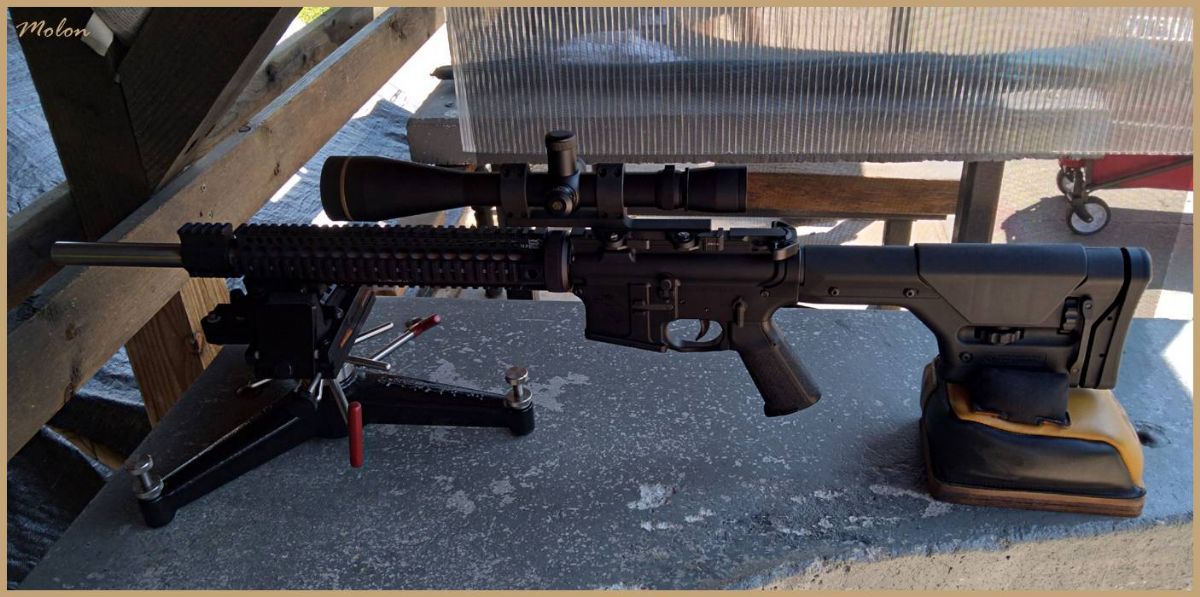 The Wind Probe . . . 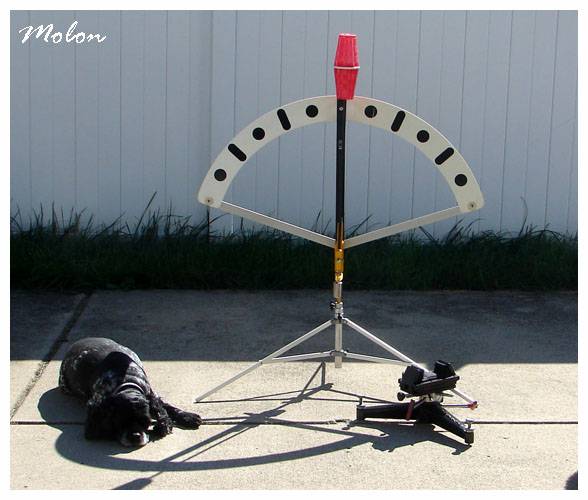 The test vehicle for this evaluation was one of my semi-automatic precision AR-15s with a 20” stainless-steel Lothar Walther barrel. The barrel has a 223 Wylde chamber with a 1:8” twist. 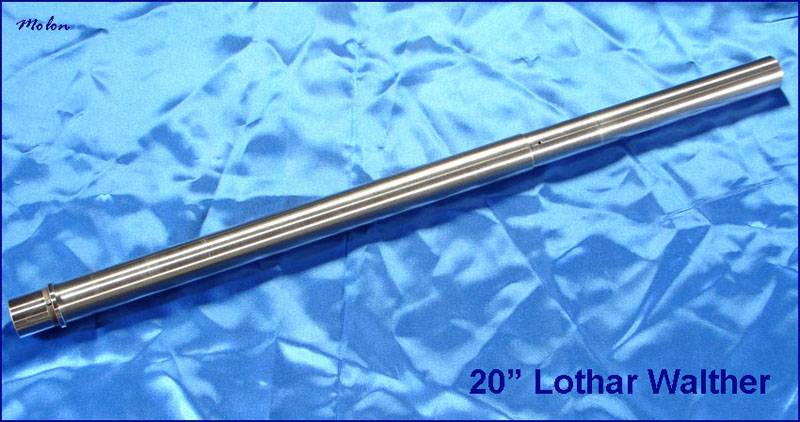 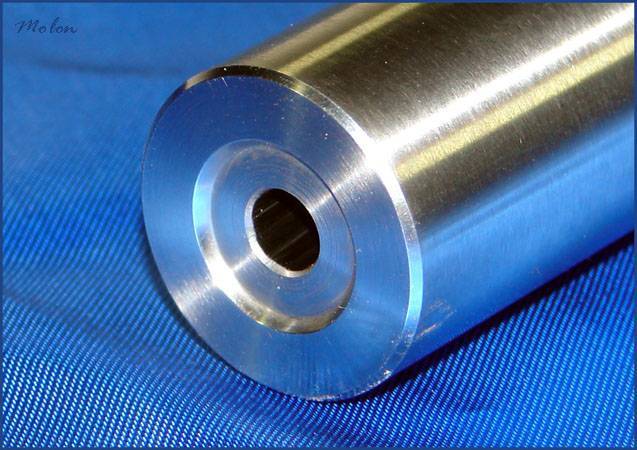 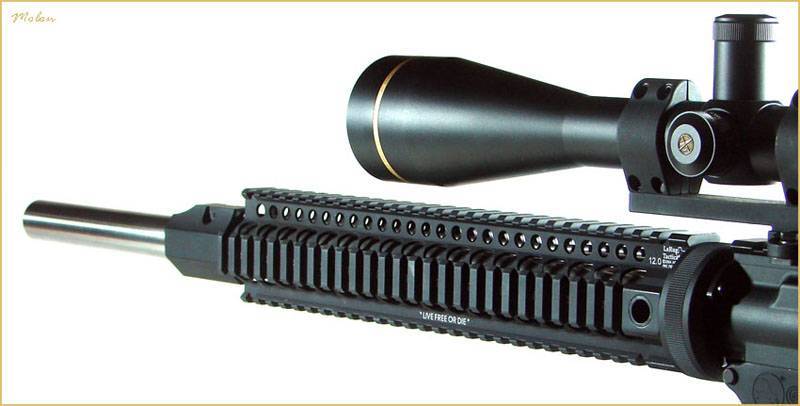 Prior to firing the M193 clones, I fired a 10-shot control group using match-grade hand-loads topped with the Sierra 52 grain MatchKing. That group had an extreme spread of 0.64”. 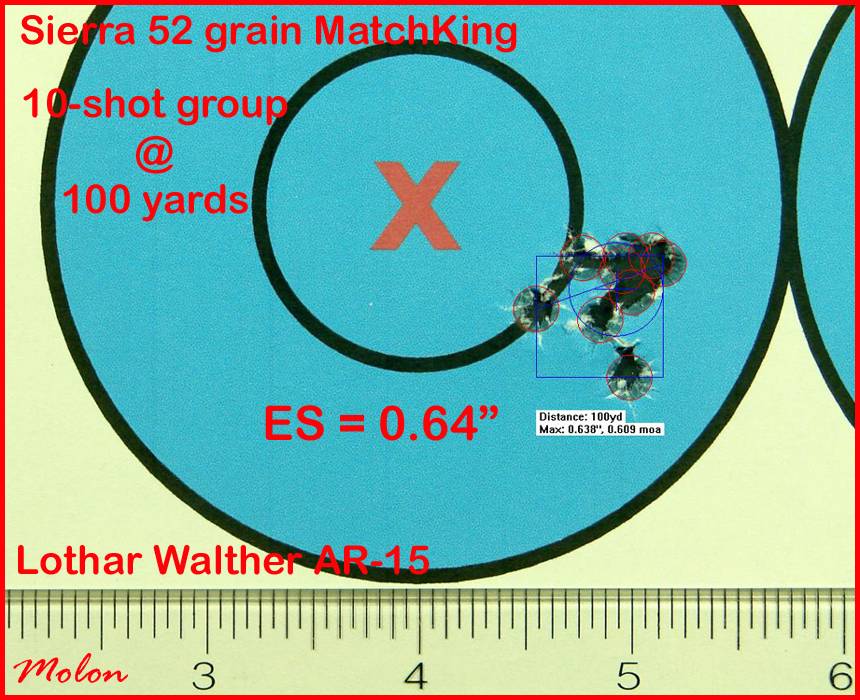 Prvi Partizan (PPU) M193 Three 10-shot groups of the PPU M193 ammunition fired consecutively from the Lothar Walther barreled AR-15 at a distance of 100 yards had the following extreme spreads: 3.00” 2.28” 3.48” for a 10-shot group average extreme spread of 2.92”. I over-layed the three 10-shot groups on each other using RSI Shooting Lab to form a 30-shot composite group. The mean radius of the 30-shot composite group was 0.80”. The smallest 10-shot group . . . 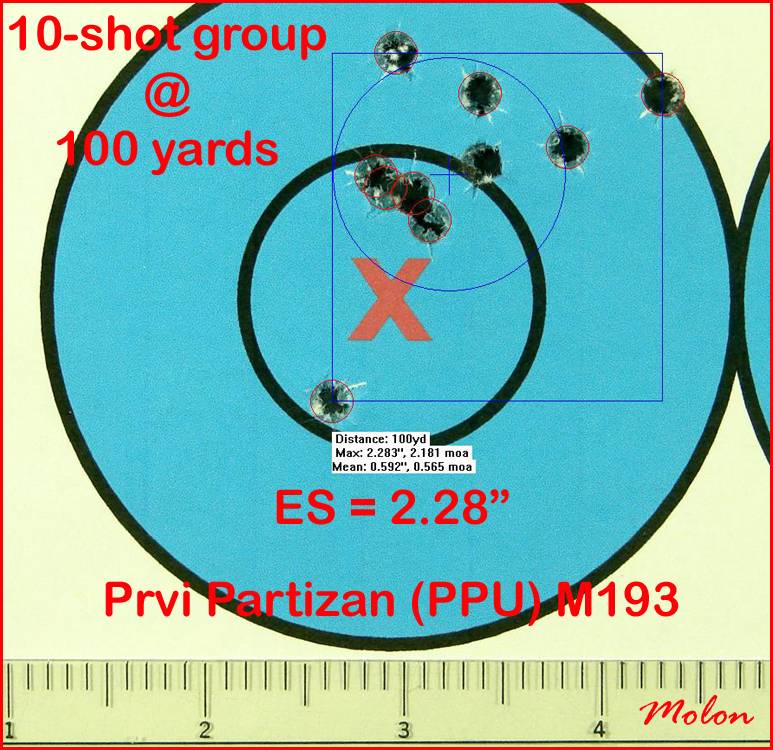 The 30-shot composite group . . . 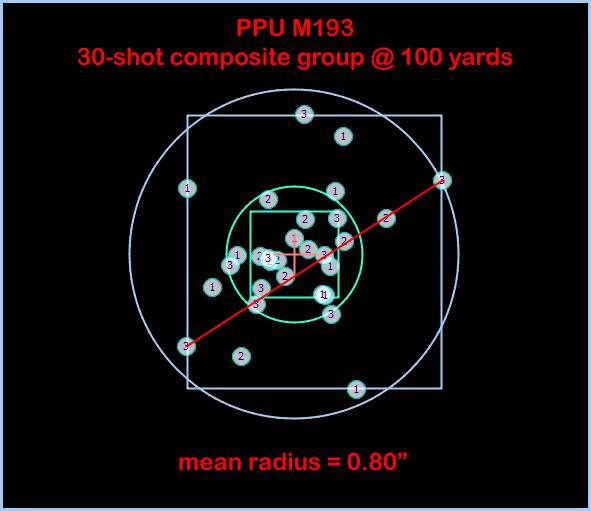 Winchester M193 Three 10-shot groups of the Winchester M193 ammunition fired consecutively from the Lothar Walther barreled AR-15 at a distance of 100 yards had the following extreme spreads: 2.21” 2.65” 2.09” for a 10-shot group average extreme spread of 2.32”. I over-layed the three 10-shot groups on each other using RSI Shooting Lab to form a 30-shot composite group. The mean radius of the 30-shot composite group was 0.72”. The smallest 10-shot group . . . 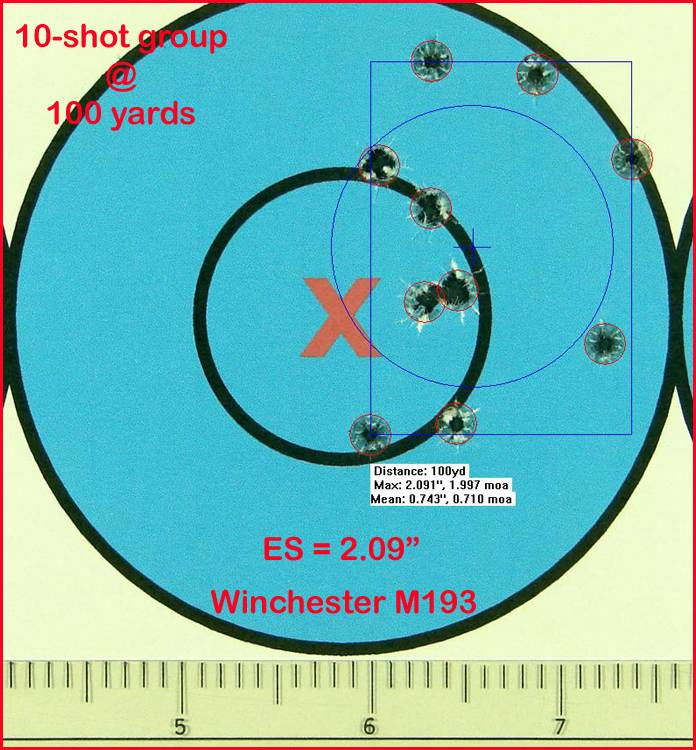 The 30-shot composite group . . . 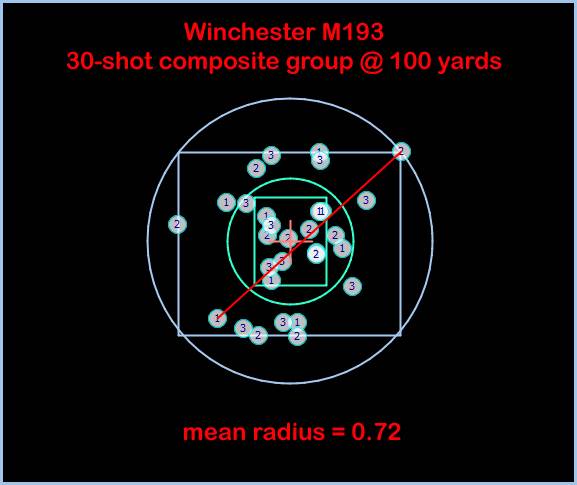 Federal XM193 Three 10-shot groups of the Federal XM193 ammunition fired consecutively from the Lothar Walther barreled AR-15 at a distance of 100 yards had the following extreme spreads: 2.36” 2.67” 1.77” for a 10-shot group average extreme spread of 2.27”. I over-layed the three 10-shot groups on each other using RSI Shooting Lab to form a 30-shot composite group. The mean radius of the 30-shot composite group was 0.66”. The smallest 10-shot group . . . 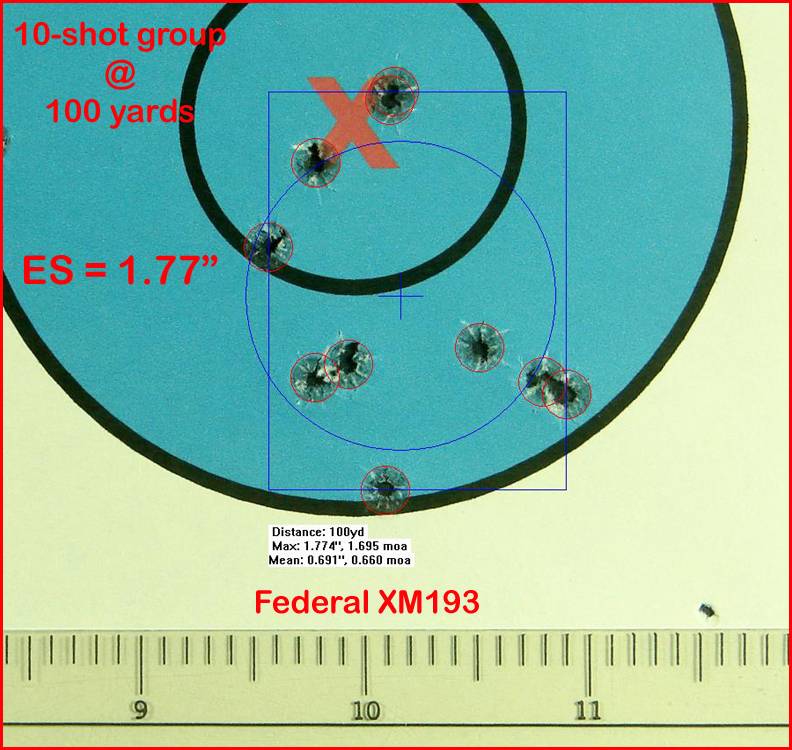 The 30-shot composite group . . . 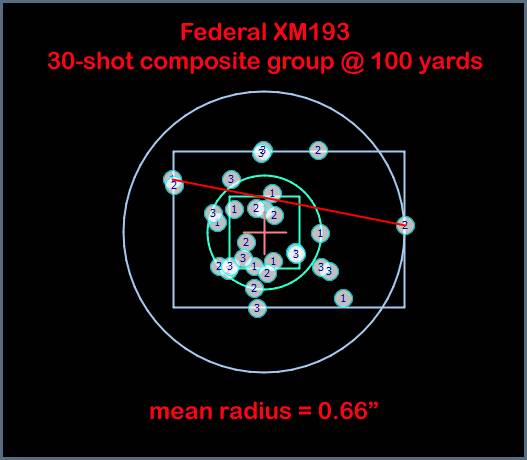 IMI M193 Three 10-shot groups of the IMI M193 ammunition fired consecutively from the Lothar Walther barreled AR-15 at a distance of 100 yards had the following extreme spreads: 1.84” 2.86” 2.16” for a 10-shot group average extreme spread of 2.29”. I over-layed the three 10-shot groups on each other using RSI Shooting Lab to form a 30-shot composite group. The mean radius of the 30-shot composite group was 0.64”. The smallest 10-shot group . . . 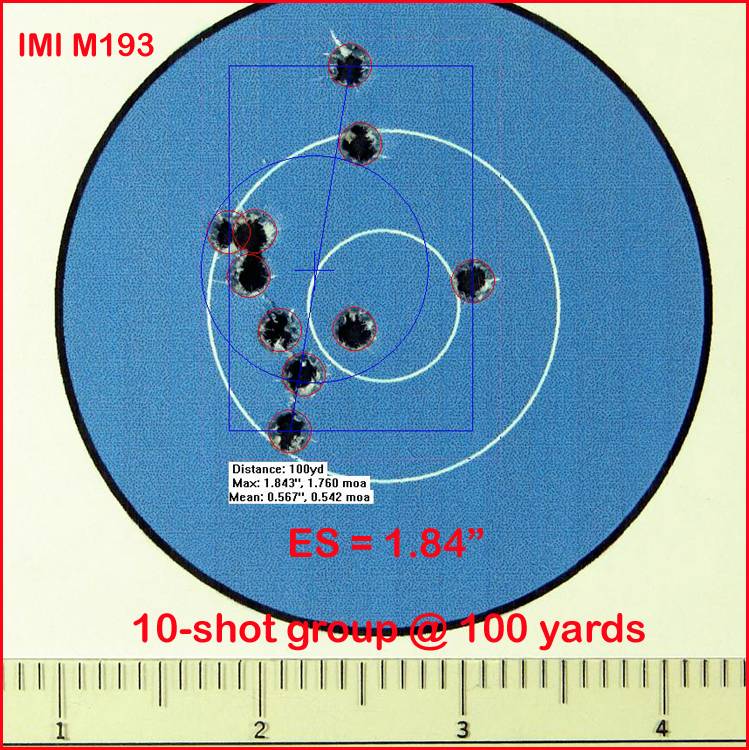 The 30-shot composite group . . . 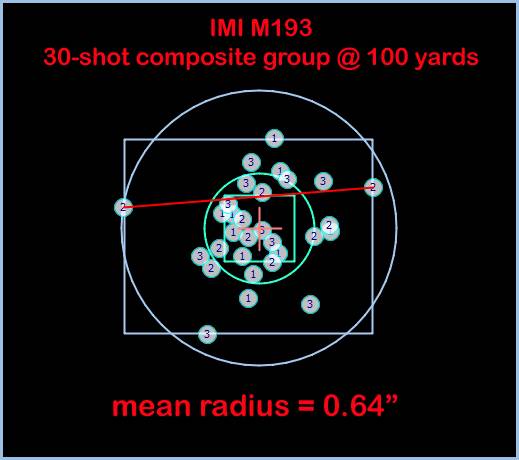 The table below summarizes the accuracy/precision results for this article. 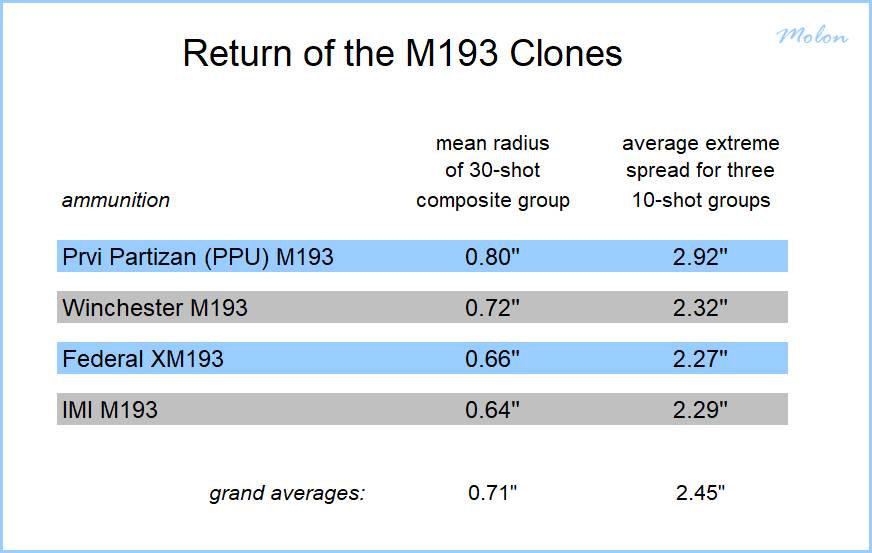 For comparison, the next table summarizes the accuracy/precision results from the 2010 evaluation. 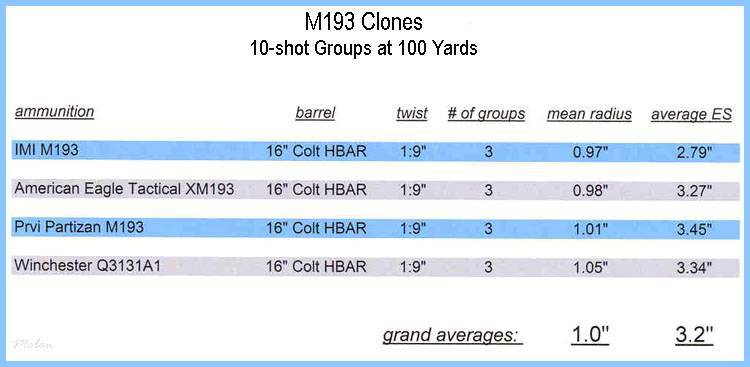  ….. |
|
|
All that is necessary for Trolls to flourish, is for good men to do nothing.
In God We Trust. Everyone else must post data. |
|
[#11]
Wow, alot of good info here.
I've achieved 1" groups repeatably with Rainier Arms barrels. Come to think of it, all my "good" guns are Rainier barrels cause I've been able to get em used on EE, and they shoot good with semi-match grade ammo. And by that I mean a bunch of Hornady steel match I bought years back. I guess I should be okay with what I have as far as accuracy or get a fuller profile barrel. Originally Posted By Molon: There isn't a semi-automatic AR-15 on the planet that will consistently shoot <2" using domestically manufactured 55 grain FMJ M193 clones. Return Of The M193 Clones https://www.ar15.com/media/mediaFiles/28568/223_cartridge_drawing_005-2200622.jpg clone: one that appears to be a copy of an original form Part 1 Genuine US Military M193 can no longer be sold to civilians, thanks to the Clinton Administration. The ammunition that is sold on the commercial market with some form of “M193” in its nomenclature is often referred to as an “M193 clone” because it “appears to be a copy” of genuine M193, but we generally have no idea what specifications of MIL-C-9963 that this ammunition has passed, or has even been tested for. Genuine M193 must be tested for and pass all of the specifications laid out in the mil-spec, MIL-C-9963. The required areas of testing included in MIL-C-9963 range from velocity, accuracy, chamber pressure and port pressure to waterproofing, temperature stability, bullet extraction, case hardness, fouling and much more. M193 is loaded with a 55 grain FMJ bullet with a cannelure. The bullet itself, must meet required specifications in order to be used in genuine M193 ammunition. For example, the specification for the thickness of the gilding metal jacket of the bullet is 0.021" with a tolerance of - 0.002". For comparison, the jacket of Hornady’s 55 grain FMJ bullet has a thickness of approximately 0.028”. Jacket thickness can have a significant effect on terminal ballistic properties, particularly that of fragmentation. Even the composition of the copper alloy used for the jacket and the lead used for the slug must meet mil-spec requirements for genuine M193. Genuine M193 can only be charged with powder that has been specifically approved by the US Military for use in this cartridge. If the ammunition in question is not loaded with one of the approved powders, it is not genuine M193 and naturally we have no way of determining what powder was used in a load simply by visual inspection. Genuine M193 will have the annealing iris visible on the shoulder and neck portion of the case. It will also will have crimped and sealed primers. Genuine M193 has a crimped case mouth along with sealant at the case mouth. In 2010, I posted an in-depth evaluation of four different brands of M193 clones that were readily available at that time. (Attack of the (M193) Clones) For this article, I evaluated recent production lots of the same four brands of M193 clones (though not necessarily the same manufacturers.) Winchester M193 https://www.ar15.com/media/mediaFiles/28568/winchester_m183_box_2021-2210446.jpg This lot of Winchester M193 is loaded in Lake City brass with a 2021 headstamp. The case-head stamp exhibits the octal station identifiers found on Lake City SCAMP machinery. The brass cases have the annealing iris still visible. The rounds are charged with ball powder. The primer pockets are crimped, but do not have any sealant. The case mouths are also crimped, but also have no sealant. https://www.ar15.com/media/mediaFiles/28568/winchester_m193_headstamp_2021-2210472.jpg https://www.ar15.com/media/mediaFiles/28568/lake_city_scamp_octal__numbering_03_resi-2209035.jpg The lot number for this lot of Winchester M193 is pictured below. The “WLC21” in the prefix of the lot number indicates that this lot of Winchester M193 was manufactured at Lake City in 2021 under Winchester “management.” https://www.ar15.com/media/mediaFiles/28568/winchester_m193_lot_number_2021-2210503.jpg Federal XM193 https://www.ar15.com/media/mediaFiles/28568/federal_xm193_box_2021-2210443.jpg This lot of Federal XM193 is loaded in Lake City brass with a 2021 headstamp. The case-head stamp exhibits the octal station identifiers found on Lake City SCAMP machinery. The brass cases have the annealing iris still visible. The rounds are charged with ball powder. As with the Winchester M193, the primer pockets of this lot of Federal XM193 are crimped, but do not have any sealant. The case mouths of this lot of Federal XM193 are also crimped, but also have no sealant. https://www.ar15.com/media/mediaFiles/28568/federal_xm193_headstamp_2021-2209028.jpg The lot number for this lot of Federal XM193 is pictured below. The “WLC21” in the prefix of the lot number indicates that this lot of Federal XM193 was manufactured at Lake City in 2021 under Winchester “management.” https://www.ar15.com/media/mediaFiles/28568/federal_xm193_lot_number_2021-2210512.jpg IMI M193 https://www.ar15.com/media/mediaFiles/28568/imi_m193_box_2021_resized-2210444.jpg This lot of IMI M193 is loaded in IMI brass with a 2021 headstamp. The annealing iris is visible and the rounds are charged with ball powder. The primer pockets are crimped and sealed and the case mouths are also crimped and sealed. https://www.ar15.com/media/mediaFiles/28568/imi_headstamp_2021-2210584.jpg Prvi Partizan (PPU) M193 https://www.ar15.com/media/mediaFiles/28568/ppu_m193_box_2020-2210445.jpg The PPU M193 brass has a 2020 headstamp and the annealing iris is visible. The primer pockets are crimped and sealed, as are the case mouths and the ammunition is charged with ball powder. https://www.ar15.com/media/mediaFiles/28568/ppu_m193_headstamp_2020_01-2210797.jpg https://www.ar15.com/media/mediaFiles/28568/four_m193_clones_2021_01_resized-2211131.jpg https://www.ar15.com/media/mediaFiles/28568/pulled_m193_bullets_2021_02-2211143.jpg https://www.ar15.com/media/mediaFiles/28568/m193_clone_2021_powder_01-2211151.jpg Part 2 Aside from aspects of M193 clones that can be assessed by visual inspection, the two main aspects of M193 clones that we can assess via live fire testing to determine if an M193 clone adheres to the US mil-spec are velocity and accuracy (technically precision). The velocity specification for M193 as cited in MIL-C-9963F states: "The average velocity of the sample cartridges, conditioned at 72 degrees, plus or minus 2 degrees Fahrenheit (F), shall be 3165 feet per second (ft/sec), plus or minus 40 ft/sec, at 78 feet from the muzzle of the weapon. The standard deviation of the velocities shall not exceed 40 ft/sec." The velocity specification is for a 20” test barrel. Depending on multiple variables, this velocity specification equates to a muzzle velocity of approximately 3270 ft/sec, plus or minus 40 ft/sec. As an aside, after reading the above specification, some of you may be wondering, “Why 78 feet from the muzzle?” The answer to that question is that this specification is simply an historical hold-over from the days when “circuit” chronographs (e.g. Le Boulenge Chronograph and the Aberdeen Chronograph) were used at Aberdeen Proving Ground, Frankford Arsenal and Springfield Armory. These types of chronographs required a significant distance between their first and second screens to produce accurate results. As an example, when using the Boulenge Chronograph, the first screen of the chronograph was placed 3 feet in front of the muzzle and the second screen was placed 150 feet beyond the first screen. For those of you who might not be aware of the following fact; chronographs determine the velocity of the bullet at a point that is midway between the first and the second screen (i.e. not at the location of the first screen). Therefore, with the above spacing, the velocity of the bullet is determined for a point that is 75 feet from the first screen. So, add the three feet (from the muzzle to the first screen) to the 75 feet (the midway point of the screens) to obtain the “78 feet from the muzzle” distance. https://www.ar15.com/media/mediaFiles/28568/chronograph_spacing_44-1845418.jpg I chronographed the four M193 clones evaluated for this article from a semi-automatic AR-15 with a chrome-lined, NATO chambered 20” Colt barrel with a 1:7” twist. Chronographing was conducted using an Oehler 35-P chronograph with “proof screen” technology. The Oehler 35P chronograph is actually two chronographs in one package that takes two separate chronograph readings for each shot and then has its onboard computer analyze the data to determine if there is any statistically significant difference between the two readings. If there is, the chronograph “flags” the shot to let you know that the data is invalid. There was no invalid data flagged during this testing. The velocities listed in the table below are muzzle velocities as calculated from the instrumental velocities using Oehler’s Ballistic Explorer software program. Each string of fire consisted of 10 rounds over the chronograph. https://www.ar15.com/media/mediaFiles/28568/oehler_chronograph_32-1342454.jpg https://www.ar15.com/media/mediaFiles/28568/oehler_computer_02-1342452.jpg Each round was single-loaded and cycled into the chamber from a magazine fitted with a single-load follower. The bolt locked-back after each shot allowing the chamber to cool in between each shot. This technique was used to mitigate the possible influence of “chamber-soak” on velocity data. Each new shot was fired in a consistent manner after hitting the bolt release. Atmospheric conditions were monitored and recorded using a Kestrel 4000 Pocket Weather Tracker. https://www.ar15.com/media/mediaFiles/28568/kestrel_4000_21-1342442.jpg Atmospheric conditions Temperature: 72 degrees F Humidity: 78% Barometric pressure: 30.02 inches of Hg Elevation: 950 feet above sea level The muzzle velocities of the four M193 clones are listed in the table below, along with the standard deviations and coefficients of variation. https://www.ar15.com/media/mediaFiles/28568/return_of_the_m193_clones_muzzle_velocit-2210949.jpg For those of you who might not be familiar with the coefficient of variation (CV), it is the standard deviation, divided by the mean (average) muzzle velocity and then multiplied by 100 and expressed as a percentage. It allows for the comparison of the uniformity of velocity between loads in different velocity spectrums; e.g. 77 grain loads running around 2,650 fps compared to 55 grain loads running around 3,250 fps. The mil-spec for M193 allows for a coefficient of variation of approximately 1.2%, while one of my best 77 grain OTM hand-loads, with a muzzle velocity of 2639 PFS and a standard deviation of 4 FPS, has a coefficient of variation of 0.15%. https://www.ar15.com/media/mediaFiles/28568/stnadard_deviation_of_4_fps_01-1342455.jpg For comparison to the velocities of the M193 clones evaluated for this article, the next table shows the muzzle velocities of the four M193 clones that I evaluated in 2010 (also fired from a 20” Colt barrel.) https://www.ar15.com/media/mediaFiles/28568/m193_chronograph_chart_01-1426669-2210773.jpg Part 3 The US accuracy specification for M193 cited in MIL-C-9963F is as follows: “The average of the mean radii of all targets of the sample cartridges, fired at 200 yards, shall not exceed 2.0 inches.” These averages are from 10-shot groups fired from machine rested, bolt-actioned, heavy test barrels. All things being equal this specification equates to a mean radius of 1 inch at 100 yards (the distance at which I tested this ammunition). I conducted an accuracy (technically, precision) evaluation of the four M193 clones following my usual protocol. This accuracy evaluation used statistically significant shot-group sizes and every single shot in a fired group was included in the measurements. There was absolutely no use of any Group Reduction Techniques (e.g. fliers, target movement, Butterfly Shots). The shooting set-up will be described in detail below. As many of the significant variables as was practicable were controlled for. Also, a control group was fired from the test-rifle used in the evaluation using match-grade, hand-loaded ammunition; in order to demonstrate the capability of the barrel. Pictures of shot-groups are posted for documentation. All shooting was conducted from a concrete bench-rest from a distance of 100 yards (confirmed with a laser rangefinder.) The barrel used in the evaluation was free-floated. The free-float handguards of the rifle rested in a Sinclair Windage Benchrest, while the stock of the rifle rested in a Protektor bunny-ear rear bag. Sighting was accomplished via a Leupold VARI-X III set at 25X magnification and adjusted to be parallax-free at 100 yards. A mirage shade was used. Wind conditions on the shooting range were continuously monitored using a Wind Probe. The set-up was very similar to that pictured below. https://www.ar15.com/media/mediaFiles/28568/lothar_walther_ar15_on_bench_03-2211995.jpg The Wind Probe . . . https://www.ar15.com/media/mediaFiles/28568/wind_probe_2016_01_framedb-1342522.jpg The test vehicle for this evaluation was one of my semi-automatic precision AR-15s with a 20” stainless-steel Lothar Walther barrel. The barrel has a 223 Wylde chamber with a 1:8” twist. https://www.ar15.com/media/mediaFiles/28568/lothar_walther_barrel_21_resized-1999713.jpg https://www.ar15.com/media/mediaFiles/28568/lothar_barrel_crown_02_resized-1297385-1342445.jpg https://www.ar15.com/media/mediaFiles/28568/lothar_walther_barrel_free_floated_05-12-1342446.jpg Prior to firing the M193 clones, I fired a 10-shot control group using match-grade hand-loads topped with the Sierra 52 grain MatchKing. That group had an extreme spread of 0.64”. https://www.ar15.com/media/mediaFiles/28568/52_smk_control_group_for_rotmc_lothar_ba-2211589.jpg Prvi Partizan (PPU) M193 Three 10-shot groups of the PPU M193 ammunition fired consecutively from the Lothar Walther barreled AR-15 at a distance of 100 yards had the following extreme spreads: 3.00” 2.28” 3.48” for a 10-shot group average extreme spread of 2.92”. I over-layed the three 10-shot groups on each other using RSI Shooting Lab to form a 30-shot composite group. The mean radius of the 30-shot composite group was 0.80”. The smallest 10-shot group . . . https://www.ar15.com/media/mediaFiles/28568/ppu_m193_2020_10_shot_group_at_100_yards-2211631.jpg The 30-shot composite group . . . https://www.ar15.com/media/mediaFiles/28568/ppu_m193_2020_30_shot_composite_group_01-2211650.jpg Winchester M193 Three 10-shot groups of the Winchester M193 ammunition fired consecutively from the Lothar Walther barreled AR-15 at a distance of 100 yards had the following extreme spreads: 2.21” 2.65” 2.09” for a 10-shot group average extreme spread of 2.32”. I over-layed the three 10-shot groups on each other using RSI Shooting Lab to form a 30-shot composite group. The mean radius of the 30-shot composite group was 0.72”. The smallest 10-shot group . . . https://www.ar15.com/media/mediaFiles/28568/winchester_m193_2021_10_shot_group_at_10-2211704.jpg The 30-shot composite group . . . https://www.ar15.com/media/mediaFiles/28568/winchester_m193_2021_30_shot_composite_g-2211723.jpg Federal XM193 Three 10-shot groups of the Federal XM193 ammunition fired consecutively from the Lothar Walther barreled AR-15 at a distance of 100 yards had the following extreme spreads: 2.36” 2.67” 1.77” for a 10-shot group average extreme spread of 2.27”. I over-layed the three 10-shot groups on each other using RSI Shooting Lab to form a 30-shot composite group. The mean radius of the 30-shot composite group was 0.66”. The smallest 10-shot group . . . https://www.ar15.com/media/mediaFiles/28568/federal_xm193_2021_smallest_10_shot_grou-2211782.jpg The 30-shot composite group . . . https://www.ar15.com/media/mediaFiles/28568/federal_xm193_30_shot_comosite_group_001-2211907.jpg IMI M193 Three 10-shot groups of the IMI M193 ammunition fired consecutively from the Lothar Walther barreled AR-15 at a distance of 100 yards had the following extreme spreads: 1.84” 2.86” 2.16” for a 10-shot group average extreme spread of 2.29”. I over-layed the three 10-shot groups on each other using RSI Shooting Lab to form a 30-shot composite group. The mean radius of the 30-shot composite group was 0.64”. The smallest 10-shot group . . . https://www.ar15.com/media/mediaFiles/28568/imi_m193_2021_228b_01_measured_01-2211933.jpg The 30-shot composite group . . . https://www.ar15.com/media/mediaFiles/28568/imi_m193_lot_228b_30_shot_composite_01-2211945.jpg The table below summarizes the accuracy/precision results for this article. https://www.ar15.com/media/mediaFiles/28568/return_of_the_m193_accuracy_results_tabl-2211974.jpg For comparison, the next table summarizes the accuracy/precision results from the 2010 evaluation. https://www.ar15.com/media/mediaFiles/28568/m193_clone_accuracy_chart_02-1426653-2211978.jpg https://www.ar15.com/media/mediaFiles/28568/molon_sig_gray_arfcom_background_002-1833285.jpg ….. View Quote |
|
|
|
|
[#12]
|
|
|
All that is necessary for Trolls to flourish, is for good men to do nothing.
In God We Trust. Everyone else must post data. |
|
[#13]
I have a 223 wylde 16” hanson. I may have gotten a gem, but it’s an absolute shooter. I got 0.5-0.6 MOA at 200 yards with hand loads.
|
|
|
|
 Win a FREE Membership!
Win a FREE Membership!
Sign up for the ARFCOM weekly newsletter and be entered to win a free ARFCOM membership. One new winner* is announced every week!
You will receive an email every Friday morning featuring the latest chatter from the hottest topics, breaking news surrounding legislation, as well as exclusive deals only available to ARFCOM email subscribers.
AR15.COM is the world's largest firearm community and is a gathering place for firearm enthusiasts of all types.
From hunters and military members, to competition shooters and general firearm enthusiasts, we welcome anyone who values and respects the way of the firearm.
Subscribe to our monthly Newsletter to receive firearm news, product discounts from your favorite Industry Partners, and more.
Copyright © 1996-2024 AR15.COM LLC. All Rights Reserved.
Any use of this content without express written consent is prohibited.
AR15.Com reserves the right to overwrite or replace any affiliate, commercial, or monetizable links, posted by users, with our own.

